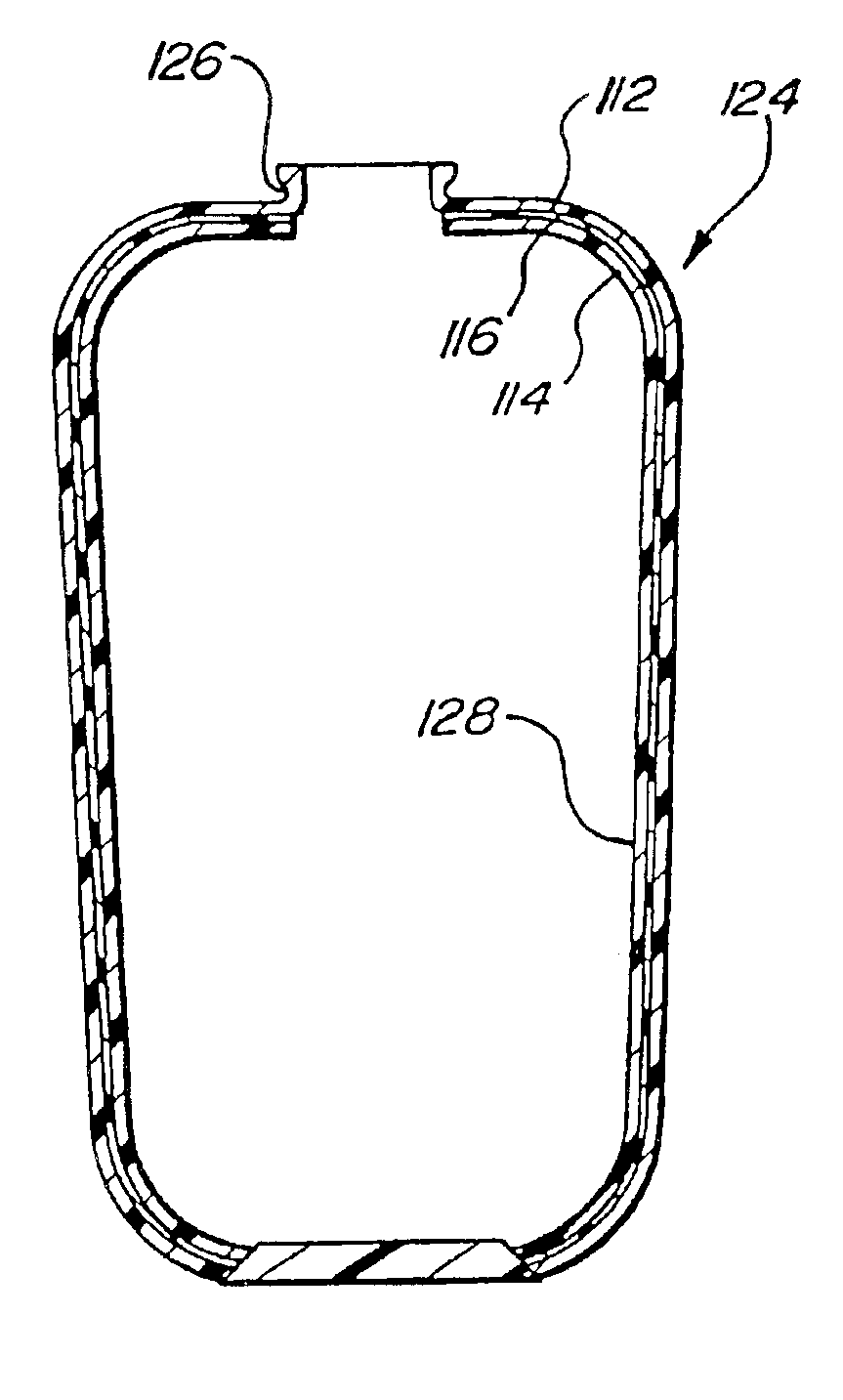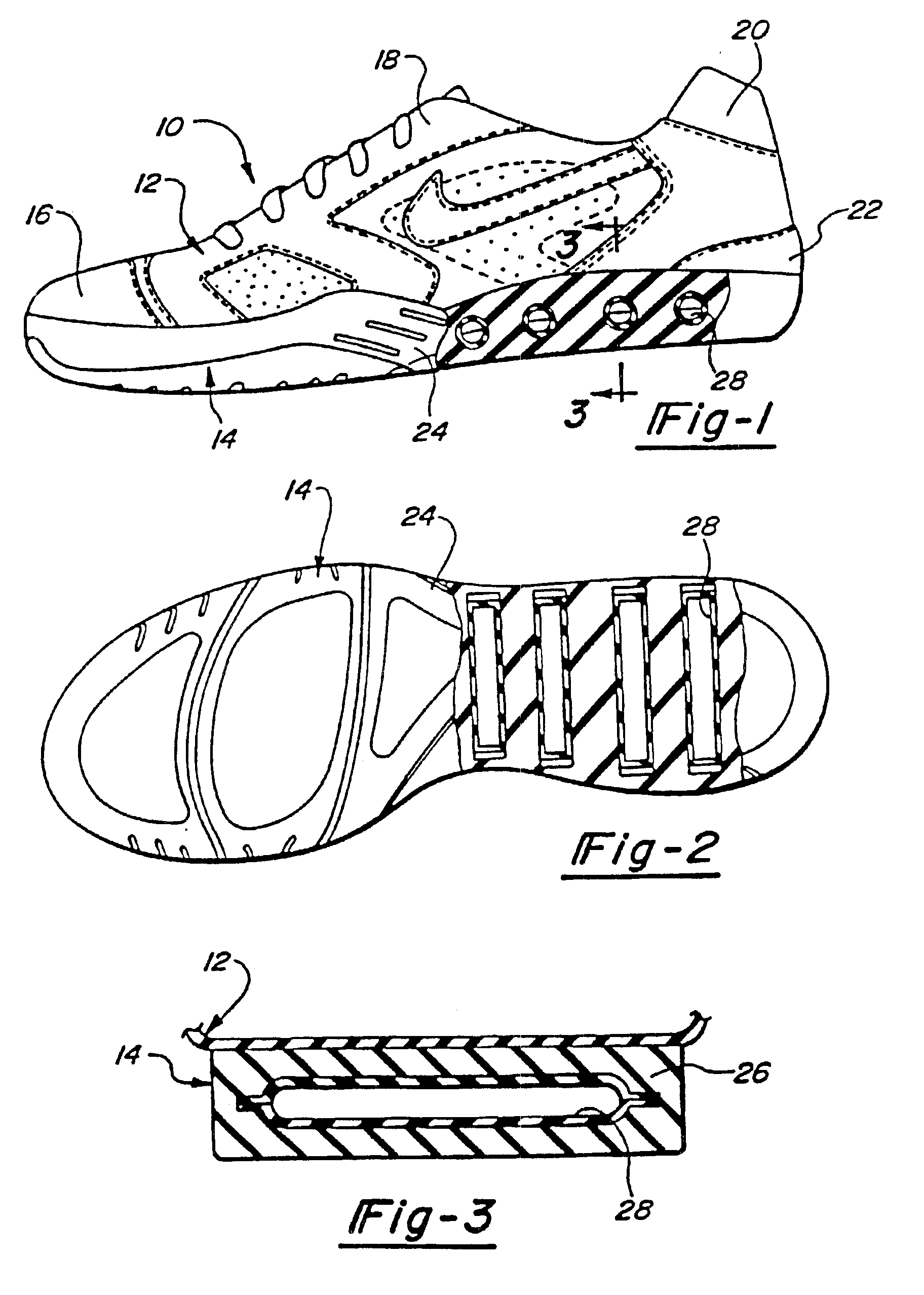Flexible membranes
a flexible membrane and membrane technology, applied in the field of membranes, can solve the problems of insufficient elasticity of thermoplastic barrier films, poor flex fatigue, heat sealing and elasticity, and relatively poor flex fatigue, and achieve the effect of improving flexibility and resistan
- Summary
- Abstract
- Description
- Claims
- Application Information
AI Technical Summary
Benefits of technology
Problems solved by technology
Method used
Image
Examples
example 1
In the above procedure, Pellethane 2355 85ATP (a polyester-polyurethane copolymer having a Shore A hardness of 85, available from Dow Chemical Co., Midland, Mich.) was used as the polyurethane and LCF 101A (an ethylene-vinyl alcohol copolymer having 32% that is available from Eval, Chicago, Ill.) was used as the EVOH were fed into a five-stream feedblock. The stream from the feedblock was introduced into a static mixer having seven elements. The resulting microlayer polymeric composite had 15% by weight of the LCF 101A and had a thickness of 20 mils. FIG. 26 is a photograph of a cross-section of the microlayer polymeric composite produced, taken using an optical microscope in reflectance mode. The EVOH layers were stained using an iodine solution. The photograph shows at least 28 layers of material.
The physical properties of the microlayer polymeric composite were measured.
Tensile strength 6494 psiElongation at fail 490%Tensile modulus44,200 psi 50% modulus 1860 psi100% modulus ...
example 2
A microlayer polymeric composite was produced according to Example 1, but having 7.5% by weight of the LCF 101A. The physical properties of the microlayer polymeric composite were measured.
Tensile strength 7569 psiElongation at fail 545%Tensile modulus28,175 psi 50% modulus 1562 psi100% modulus 1777 psi200% modulus 2419 psi300% modulus 3636 psiGas Transmission Rate 0(for nitrogen)
PUM
| Property | Measurement | Unit |
|---|---|---|
| thickness | aaaaa | aaaaa |
| thickness | aaaaa | aaaaa |
| thickness | aaaaa | aaaaa |
Abstract
Description
Claims
Application Information
 Login to View More
Login to View More - R&D
- Intellectual Property
- Life Sciences
- Materials
- Tech Scout
- Unparalleled Data Quality
- Higher Quality Content
- 60% Fewer Hallucinations
Browse by: Latest US Patents, China's latest patents, Technical Efficacy Thesaurus, Application Domain, Technology Topic, Popular Technical Reports.
© 2025 PatSnap. All rights reserved.Legal|Privacy policy|Modern Slavery Act Transparency Statement|Sitemap|About US| Contact US: help@patsnap.com



